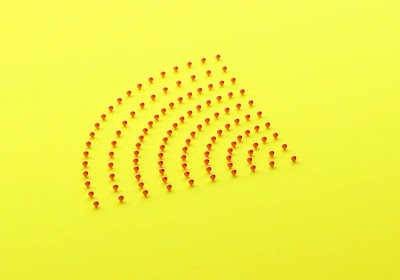An N95 Is the Best Mask for Omicron. Here's Why
As health officials scramble to minimize spread of the highly contagious Omicron variant, many experts have recommended that people switch from cloth or surgical masks to more-protective N95 and KN95 masks.
The U.S. Centers for Disease Control and Prevention’s (CDC) current mask guidance does not recommend one type of mask over another, instead specifying that people should wear a mask that fits snugly and covers the nose and mouth. CDC Director Dr. Rochelle Walensky said that fundamental guidance won’t change—despite recent reports to the contrary—but told reporters that the agency will soon publish more information about the differences between masks. At the same time, the federal government is trying to make medical-grade respirators more accessible to the general public. On Jan. 13, President Joe Biden said his administration will soon provide the public with free N95 masks, though he has not yet provided details.
After living with COVID-19 for almost two years, many people remain confused about which masks to wear and why. In the earliest days of the pandemic, federal health officials explicitly told members of the public not to wear masks, in a somewhat misguided attempt to preserve supplies for health care workers. Then, in April 2020, the CDC changed its guidance to recommend masks—but specifically asked people to wear cloth face coverings rather than medical masks to reserve inventory for health care workers.
Supply has stabilized since then, yet many Americans continue to wear either cloth or flimsier surgical masks instead of N95 or KN95 respirators. Here’s what to know about wearing a mask during the Omicron wave.
What are the differences between masks?
It remains true that any mask is better than none. But all masks aren’t equal.
A properly worn N95 respirator can filter out up to 95% of particles in the air, thanks to its tight fit and synthetic material, which is made up of a web of tiny fibers charged with electrostatic energy. KN95 masks, which are the Chinese equivalents of N95s, are meant to meet the same filtration standard, but there’s less regulatory oversight of their manufacturing. KF94 masks, meanwhile, are made in South Korea. When manufactured according to Korean government standards and worn properly, they filter out up to 94% of particles.
Surgical masks do not fight as tightly and provide significantly less filtration than N95s, according to a 2020 study published in JAMA Internal Medicine. Cloth masks act as a physical barrier but typically provide even less filtration than surgical masks.
What mask is best for Omicron?
With its high transmissibility, “Omicron has really changed how we need to protect ourselves against getting this,” says Dr. Mohammad Sobhanie, an infectious disease physician at the Ohio State University Wexner Medical Center. Wearing a good mask is one way to do that, along with best practices like vaccination, social distancing and ensuring good ventilation.
A recent study published in the journal Proceedings of the National Academy of Sciences estimated that the risk of COVID-19 transmission can be reduced up to 75-fold when a sick person and someone nearby both wear N95-style masks as opposed to surgical masks. And a research review published in 2021 found that N95s halved health care workers’ risks of getting COVID-19, relative to surgical masks. (The Wall Street Journal has a handy infographic that approximates how well different masks prevent transmission.)
N95s do come with downsides, however. They can be uncomfortable, particularly when worn for long periods of time. They can also be harder to find and more expensive than simple surgical or cloth masks. If those barriers will absolutely prevent you from wearing your mask consistently and correctly, you might be better off with a lower-grade face covering you can commit to wearing, says Emily Sickbert-Bennett, director of infection prevention at UNC Medical Center.
“A well-fitted N95 would be the highest quality filtering mask that you could wear,” she says. But “the best mask you can wear is the one that you will wear.” In experimental conditions, N95s are clearly superior—but you also need to think about your real-life behavior, she adds.
What if I want to keep wearing cloth or surgical masks?
If you plan to continue wearing cloth or surgical masks, it’s smart to make sure they’re working as well as possible.
“The effectiveness of a mask is a combination of both how the material filters and how it fits your face,” Sickbert-Bennett says. Your mask should be snug against your face without significant gaps at the sides, top or bottom. Simple fixes—like knotting the ear loops on a surgical mask to tighten the fit, or wearing a cloth mask over a surgical mask to cover more of your face—can improve protection, she says.
Different situations may also call for different masks, Sobhanie says. “If you’re in an area that’s completely packed, then you may want to use a KN95 or N95 mask,” he says. But for lower-risk settings, like a quick grocery run in an uncrowded store , a surgical mask probably does the job.
And while cloth and surgical masks don’t shield their wearer from all germs, research continues to show that they can help protect others.
In a study published Jan. 12 in the Journal of Infectious Diseases, researchers measured the path of respiratory droplets and aerosols as participants coughed while wearing no face covering, a cloth mask and a surgical mask. They found that particles traveled about four feet when participants were maskless, compared to roughly two feet in a cloth mask and less than one foot in a surgical mask. A similarly designed study published in 2020 found that N95 and KF94 masks were even better at containing droplets and aerosols than surgical masks.
Wearing “anything is worth it,” says Kareem Ahmed, an associate professor of mechanical and aerospace engineering at the University of Central Florida and co-author of the new study. “You’re limiting your transmission of aerosols and droplets to the person next to you.”
How can I tell if my mask is authentic?
Knockoff masks are everywhere. About 60% of the KN95 respirators sold in the U.S. are fake, according to the CDC.
A true N95 mask meets standards set by the National Institute for Occupational Safety and Health (NIOSH). If a respirator does not have NIOSH markings, has decorative add-ons like sequins, uses ear loops instead of headbands or advertises being approved for children, it is likely fake, NIOSH says. (As an occupational safety agency, NIOSH’s standards don’t apply to kids.)
It’s even harder to know if a KN95 or KF94 mask is real, since they’re made outside the U.S. and thus follow different regulatory structures. But there are a few things to look for. A real KF94 is made in South Korea, and a KN95 made according to the latest standards should be stamped with “GB2626-2019,” Wirecutter reports. A KN95 marked with a “GB” number ending in 2006 was made according to earlier standards, but should be fine to use as long as it hasn’t passed the expiration date on the box.
If you have questions about a specific mask, you can check if it’s on NIOSH’s list of approved N95s. Groups like Project N95 also vet masks, and engineer Aaron Collins tests many specific masks and shares the results on Twitter.
Can I reuse an N95?
N95 masks are supposed to be worn once. If you must re-wear a mask, you can leave it in a brown paper bag in a room-temperature, dry environment for a few days; by then, all the germs on it should have died, according to guidance from experts at the University of California, Riverside. But if your mask is visibly soiled or loses its snug fit, you need to pitch it, Sobhanie says.
Do I need to wear a mask outside with Omicron?
Crowded, poorly ventilated indoor environments remain the riskiest places for COVID-19 transmission. It’s not impossible to get COVID-19 outside, but you’re much safer outdoors than in. Still, Sickbert-Bennett says there are certain scenarios where it might make sense to wear a mask outside, such as in the stands at a sporting event or at a crowded concert. “We prefer to have rules of thumb,” she says, “but it is always a continuum.”




Comments
Post a Comment